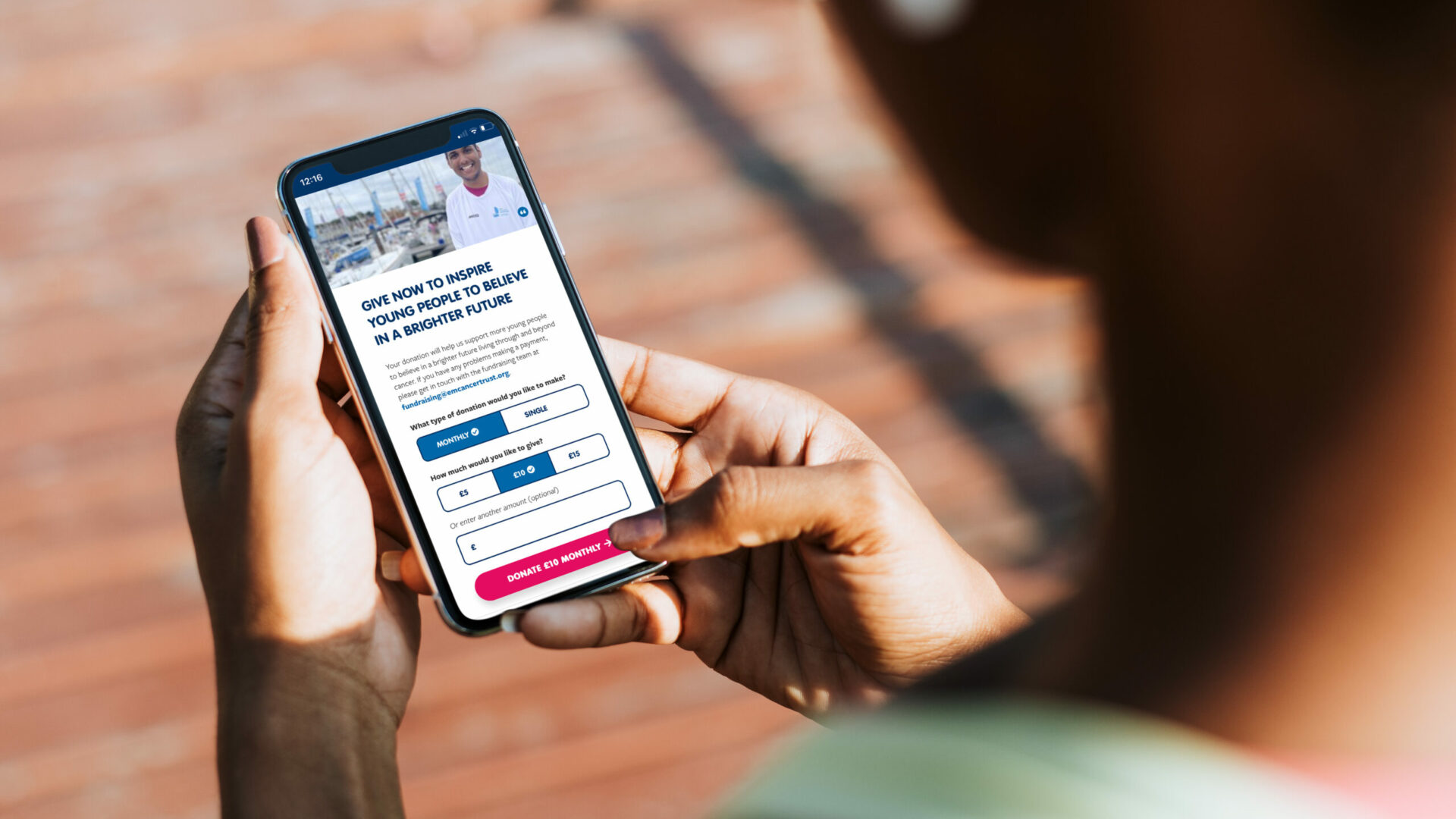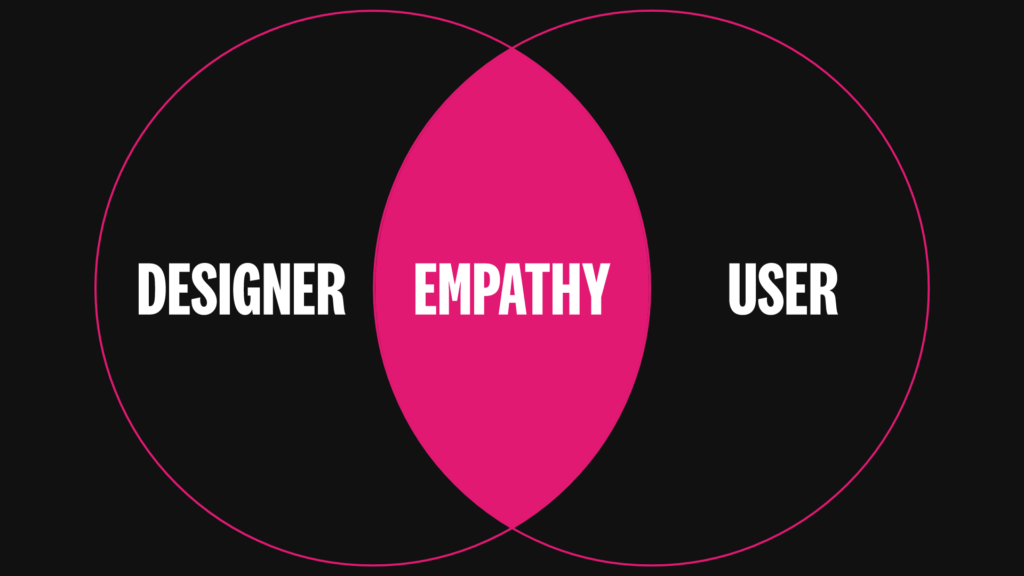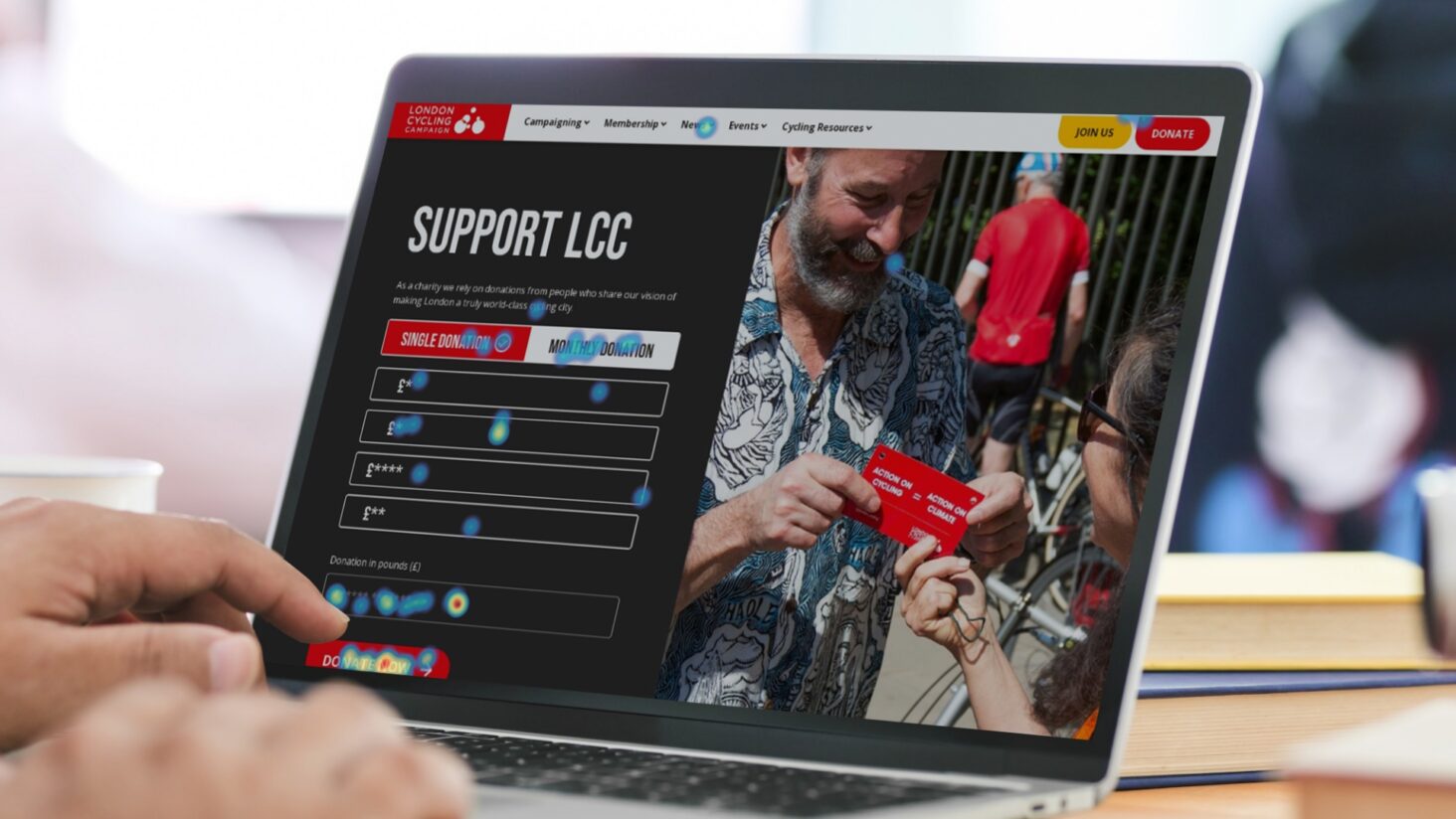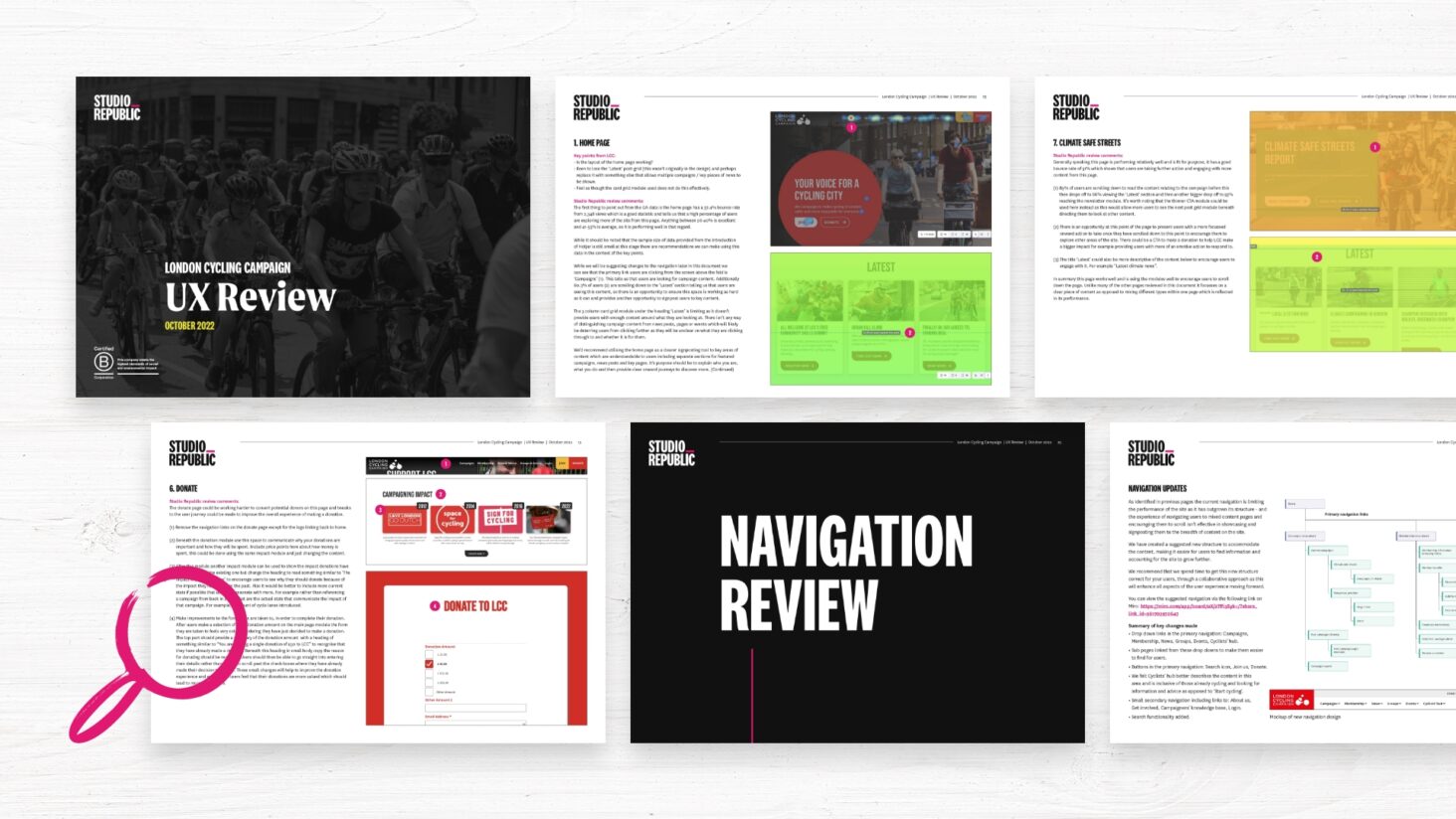Why UX matters for charity and non-profit websites - Amplify your user experience
What is UX?
Although the term “UX” has been prevalent in the digital world for quite some time, it doesn’t have the same notoriety within a lot of third sector organisations. So, what exactly is “UX” and why is it so important for charities and non-profits?
As UX Lead at Studio Republic, I’ll take you through exactly what you need to know for your charity, so you can take full advantage of everything UX has to offer.
UX – or User Experience – refers to the overall quality of interaction that individuals have with a product, system, or service. In relation to websites, this means how visitors perceive and interact with the site. It encompasses the overall quality of their experience, from the moment they land on the website to the time they leave.
This means that visitors can easily navigate a site, find information, and complete tasks through well-organised menus, responsive design for different devices, fast loading times, readable content, and interactive features. Essentially, for charities this means creating a seamless and engaging experience on your website that will inspire more users to support your work.
Let’s look more closely at why UX matters specifically for charities and non-profits and how quality UX can elevate the performance of your site to better serve your audiences and help you secure more donations, cultivate support, and boost retention.
1) Empathy-Driven Design
Empathy is a key driver for individuals to give to charity or support a cause. A meaningful UX design can amplify this sentiment and support emotional connections to your work. By understanding your users’ needs, motivations, and emotions, we can tailor a website experience to resonate with your target audience. A design process driven by empathy and utilises user research methodologies creates a strong connection with your audience, making them feel valued and understood, which is particularly important when conveying your charity’s mission.
2) Clear Communication of Purpose
A key challenge for many of the charities and non-profits we work with is conveying their purpose succinctly on their site. UX design provides a framework to help convey your charity’s mission and vision in a concise and compelling way. Through a defined hierarchy of information and strategic layout, complemented by impactful headlines, powerful messaging, and stand-out visuals, your website can effectively communicate your work and inspire people to take action.
3) Donor Engagement and Conversion
For charities and non-profits we know that securing donations is paramount. A steady income stream can fund the continuation of vital work and also help charities plan better for the future. UX design optimises the donation process, making it frictionless and secure. By simplifying forms, providing transparent information, and offering various payment options, you can boost donor confidence and encourage higher conversion rates. A positive donation experience builds trust and encourages repeat giving, allowing you to create a strong donor base.

4) Volunteer and Community Engagement
Support for charities comes in many forms and we know that charities and non-profits thrive and rely on community involvement and volunteer support. A tailored UX design can help create defined user journeys to encourage people to get involved through dedicated sections for volunteer opportunities, event registration, fundraising, community forums, and more. By making these interactions user-friendly and intuitive it can encourage active participation and build a sense of community.
5) Accessibility and Inclusivity
Inclusive and accessible design is a core principle of UX design. A well-designed website considers the needs of all users and abilities. Implementing accessibility features like alt text for images, proper contrast for readability, and keyboard navigation ensures that your charity website can be accessed and enjoyed by a diverse audience, allowing you to have greater impact.

6) Storytelling that Resonates
Compelling narratives lie at the heart of charity and non-profit work. Powerful storytelling illustrates the need and impact of your work, and most importantly, inspires support. UX design allows you to present these stories in the most engaging way. Through the strategic use of information hierarchy, defined user journeys, visuals, animations, and interactive elements, you can immerse visitors in your cause and evoke emotional responses that drive action.
7) Improving Navigation and User Journeys
One of the most common issues we encounter when designing charity and non-profit websites is that the existing site is confusing and difficult to navigate. Implementing a full UX design process enhances navigation on a charity website by developing an intuitive and organised structure. Through dedicated research and testing methods, we are able to define a new information architecture that provides clear menu labels, logical content grouping, and strategically placed calls-to-actions.
This enables users to effortlessly find relevant information, make donations with ease, get involved with volunteering and fundraising opportunities, and any other key goals. A well-designed navigation experience simplifies their journey, increases engagement, and empowers them to support the organisation without any barriers.
8) Flexibility and Growth
As your organisation evolves, so should your website. UX design provides the flexibility to adapt and grow, ensuring that your digital presence remains aligned with your changing goals, projects and initiatives. With our Growth offering (support for the continuous evolution of your digital platforms) we build a close and ongoing relationship where we regularly analyse user behaviour, test designs, review specific journeys, and listen to feedback to deliver sustainable and cost-effective adaptations.
Summary
In summary, UX design is not just a technical aspect of the website design and development process, it’s an essential tool that empowers charity or non-profit organisations to create meaningful connections, drive engagement, boost fundraising revenue, and affect positive change. By putting the user at the centre of your digital strategy, you can build a website that not only showcases your mission but also inspires others to become active supporters. Embrace UX design as a driving force in your online journey and watch as your impact expands in ways you never thought possible!
Written by Harley Southwick, UX Lead
Are you ready to amplify your user experience?
Hi I’m Harley, UX Lead at Studio Republic. If you’d like to book in a free 30 minute call with me to discuss our UX Audit and your website please click on the button below. Or give me a call on 01962 659 123.






